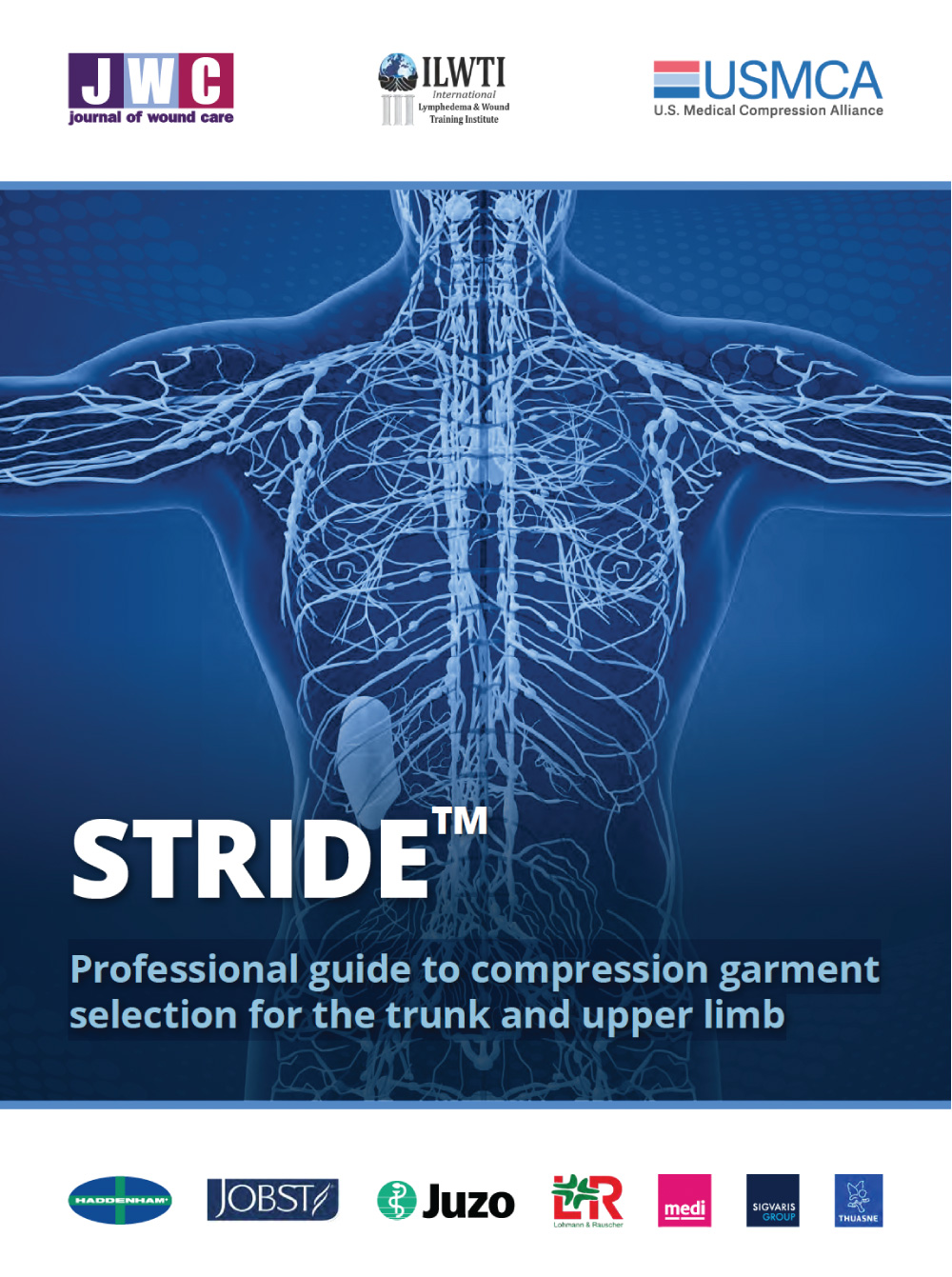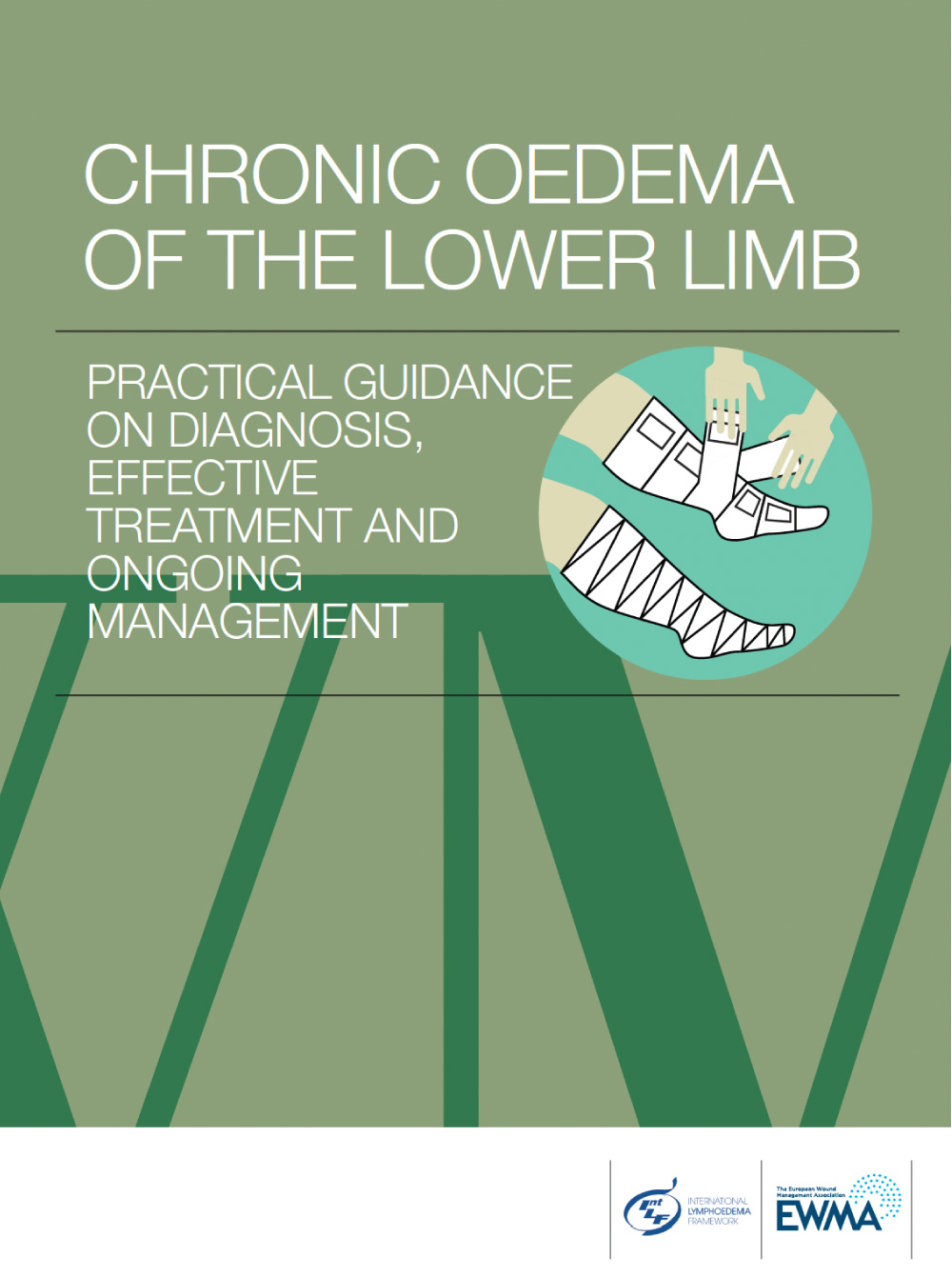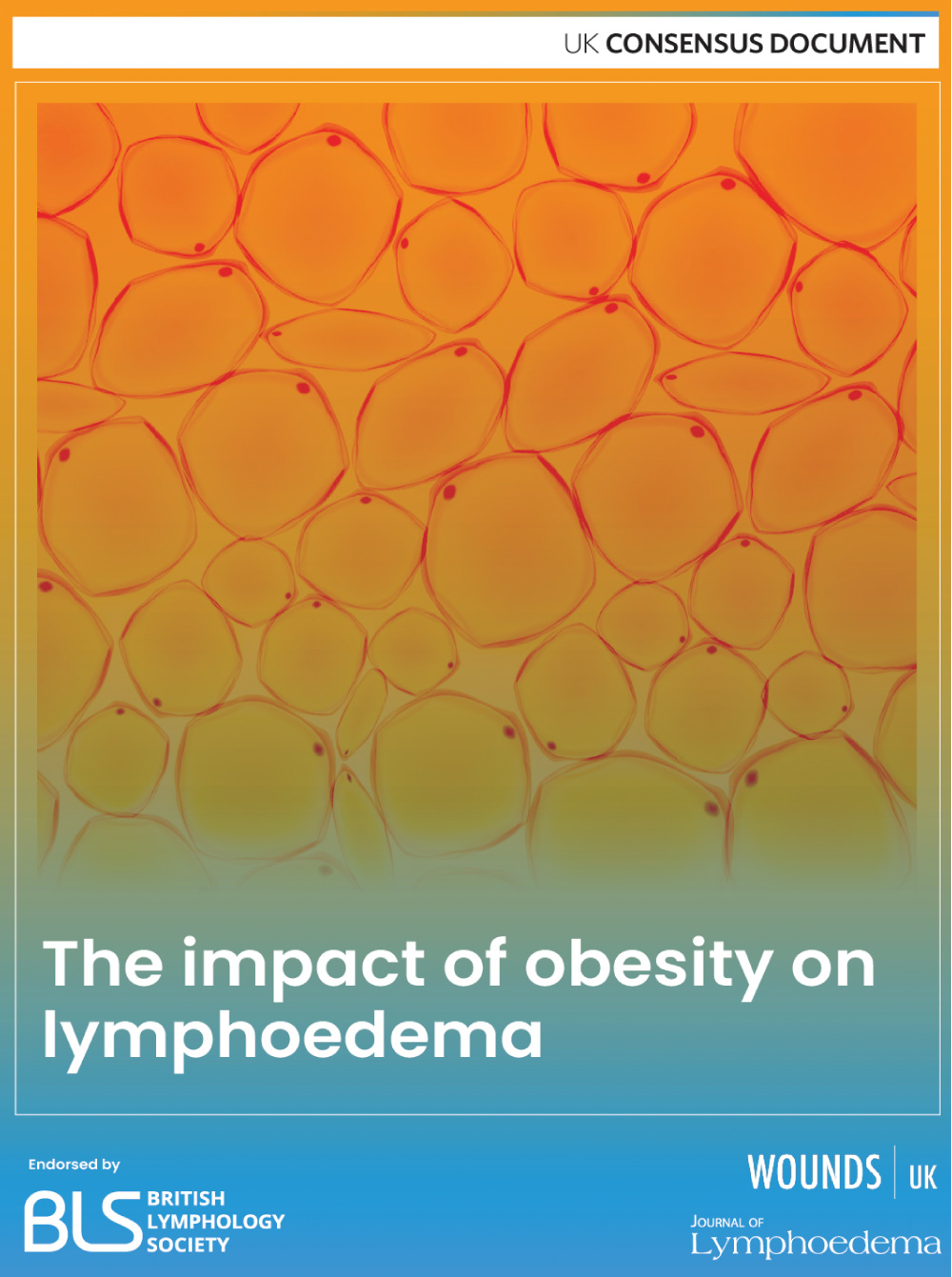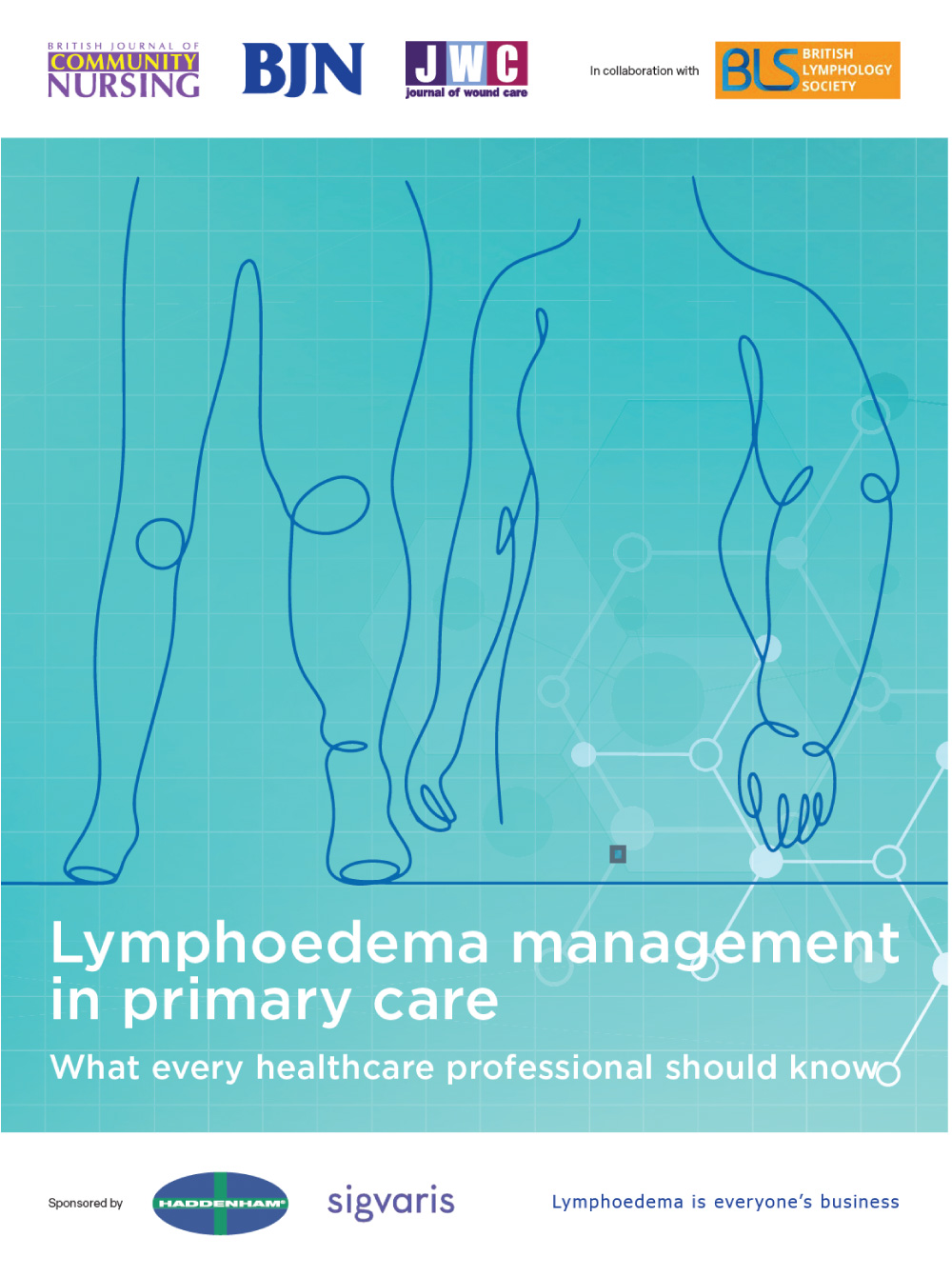New Position Papers: Updated Guidance for Practice
October 2025
Five position papers published in 2025 provide updated, evidence-based guidance on lymphoedema and chronic oedema care. Together, they address key aspects of assessment, management, and patient support — from garment selection and obesity-related factors to clinical definitions and primary care practice. Each paper reflects current expert consensus and aims to support consistent, high-quality care across clinical settings. Explore the summaries below and access the full publications for detailed recommendations and insights.
STRIDE™: Professional guide to compression garment selection for the trunk and upper limb
Ehmann, S., McKeown, B., Davis, S., Bock, K.J., Whitaker, J., & Dolgoy, N. (2025). STRIDE™: Professional guide to compression garment selection for the trunk and upper limb. Journal of Wound Care, 34(S11C), S3–S59.
This document introduces the second iteration of the STRIDE algorithm, expanding its scope from lower-limb to upper-body lymphoedema, including the arms, breast, and trunk. It provides a comprehensive, evidence-based framework for selecting compression garments tailored to individual patient needs. The algorithm considers six key factors: shape, texture, refill patterns, patient-specific issues, dosage, and etiology. It emphasises patient-centered care, addressing functional, psychological, and financial challenges to ensure adherence and optimal outcomes. The document also categorizes compression garments and accessories, discusses textile properties, and presents case studies and research findings to validate the algorithm’s effectiveness in managing upper-body lymphoedema.
Lymphoedema Clinical Definitions and Assessment Guide (5S)
BLS 2025. Lymphoedema Clinical Definitions and Assessment Guide (5S).
Found at: www.thebls.com/documents-library.
This document provides updated definitions, classifications, and a comprehensive assessment framework for lymphoedema. It introduces the 5S assessment guide, focusing on Skin, Subcutaneous tissues, Site, Size, and Shape to evaluate lymphoedema severity, stage, and complications. The guide distinguishes between primary and secondary lymphoedema, chronic oedema, and lipoedema, offering tools like PEV, TDC, and BIS for accurate measurement. It emphasizes a patient-centered approach to treatment planning, addressing complexity, comorbidities, and psychosocial factors. The guide aims to standardize clinical assessments and improve diagnosis, management, and treatment outcomes.
Chronic Oedema of the Lower Limb: Practical guidance on diagnosis, effective treatment and ongoing management
Collier M, Barbul A, Campbell RF, Filori P, Haughey L, Hazledine M, Hellgren M, Hopkins A, Isoherranen K, Lagus H, Ryan H, Moffatt C. Chronic Oedema of the Lower Limb: Practical guidance on diagnosis, effective treatment and ongoing management. J Wound Management. 2025;26(3 Sup1):S1–S88. doi: 10.35279/jowm2025.26.03.sup01.
This document provides comprehensive guidance on the diagnosis, treatment, and management of chronic oedema of the lower limb. It emphasises the importance of early recognition, holistic assessment, and multidisciplinary care to improve patient outcomes. Key topics include pathophysiology, differential diagnosis, compression therapy, wound and skin care, clinical pathways, and patient perspectives. It highlights the role of compression therapy as the gold standard for managing chronic oedema and addresses challenges in adherence. The document also explores psychosocial impacts, patient education, and health economics, aiming to equip healthcare professionals with evidence-based strategies to enhance care and quality of life for affected individuals.
The impact of obesity on lymphoedema
Fletcher J, Borthwick Y, Brown L et al (2025). Wounds UK.
This document explores the complex relationship between obesity and lymphoedema, highlighting how obesity exacerbates lymphatic dysfunction and complicates treatment. It provides expert consensus on assessing, diagnosing, and managing lymphoedema in patients living with obesity, emphasizing a person-centred, holistic approach using a biopsychosocial framework. Key recommendations include early diagnosis, equitable access to care, tailored treatment plans, and addressing weight stigma in healthcare. The document outlines management pathways, including compression therapy, movement, skin care, and weight management, alongside psychological and pharmacological support. It advocates for integrated care between lymphoedema and weight management services to improve patient outcomes and quality of life.
Lymphoedema management in primary care
Borthwick, Y. et al. (2025) ‘Lymphoedema management in Primary Care’, British Journal of Community Nursing, 30(Sup10a), pp. 1–34. doi:10.12968/bjcn.2025.0206.
This document provides comprehensive guidance for primary care professionals on the identification, management, and prevention of lymphoedema, a chronic condition caused by lymphatic system dysfunction leading to fluid buildup and swelling. It emphasizes the importance of early diagnosis and intervention to improve patient outcomes and reduce complications like cellulitis and lymphorrhoea. The document highlights the role of healthcare professionals in initiating first aid, educating patients on self-management, and referring severe cases to specialist services. It addresses barriers to care, such as lack of training and resources, and advocates for patient empowerment, supported self-care, and improved commissioning of lymphoedema services.









